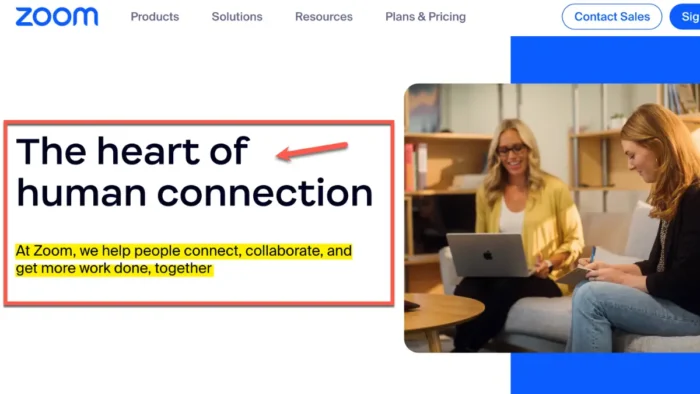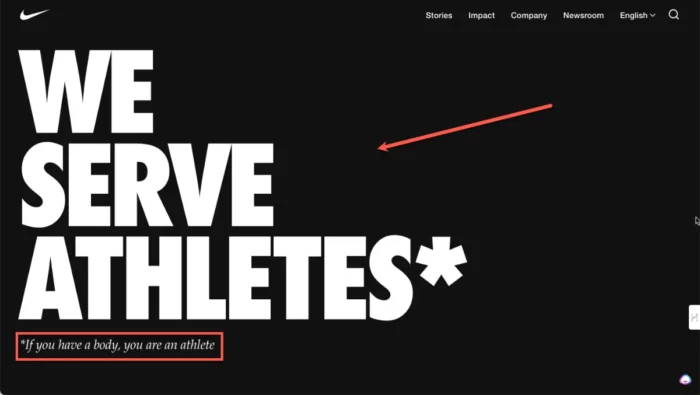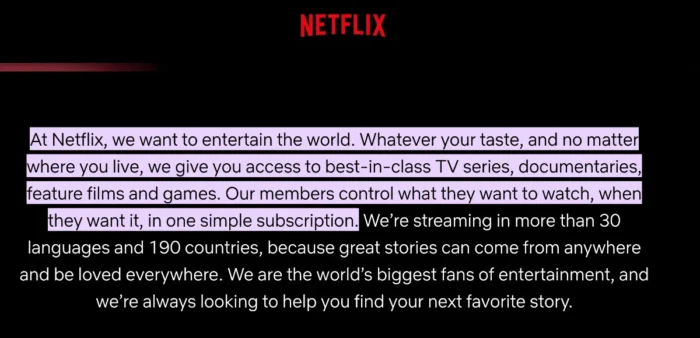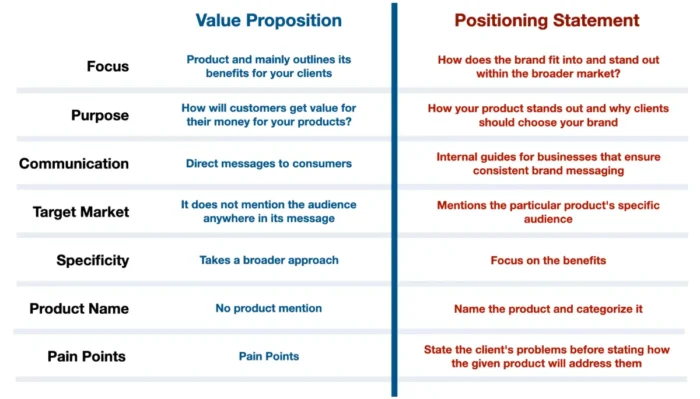Marketing has several aspects that aim to increase your company’s sales. However, before the sales start flowing in, you must first convince customers to buy from you, not your competitors. You must adopt appropriate business and marketing strategies that showcase and define your brand, and the value proposition and positioning statement are things that can help you. These twin pillars represent the core of articulating your brand’s identity and worth to the world.
If you want to differentiate yourself from the competition, you must know the difference between the two concepts and recognize each other’s unique functions and messaging distinctions. This article will discuss the main differences between a value proposition and a positioning statement. Read on!
The Genesis of Value Proposition and Positioning Statement
Although the terms “value proposition” and “positioning statement” are sometimes used interchangeably, they represent two distinct foundations for your brand potential. These two statements will probably be the best weapons in the hands of your sales and marketing teams and the product development team. This is because they will guide your marketing teams and sales reps in clearly understanding your brand’s strategic position.
Understanding the impact of these fundamental statements on customer perceptions is important for mapping the emotional and logical triggers that guide target customers’ purchasing decisions. Therefore, developing these critical messages will require a deep understanding of your product strengths, market needs, and competitive environment.
Let’s first see what both concepts mean.
Related: How to Add Value to Your Products and Services
What is a Value Proposition?
Your value proposition is a compact, compelling sentence summarizing why someone should buy your product or service. It outlines the primary benefit of a purchase, its competitive advantage, and reasons for an ideal customer to believe in your company’s offerings.
So, your value proposition is a promise of value you will deliver, acknowledge, and respect, or simply how your customers will benefit from your products.
A strong value proposition speaks directly to the customer’s heart, illustrating how your product resolves their pain points or fulfills their desires. It’s about that irresistible “something” that verifies your claim as the go-to solution in the market. When customers read your value propositions, they should not misinterpret what your brand stands for and what you offer them.
Related: How To Build a Superior Value Proposition
Examples of Effective Value Propositions
These value propositions encapsulate the essence of their offerings and communicate the unique value they deliver to their customers.
Slack: “Slack is where work happens.”

This simple yet powerful statement perfectly captures Slack’s key benefits and advantages as a hub for team collaboration. It emphasizes its role in redefining team communication in a professional setting.
Slack’s value proposition is compelling because it directly appeals to businesses and teams looking for an efficient, centralized communication and project management platform.
Zoom: “The heart of human connection.”

Zoom’s value proposition underscores its primary benefit of reliable, easy-to-use video conferencing technology. This statement highlights its competitive advantage in the market—connection, collaboration, and getting more work done.
So, Zoom appeals directly to remote teams and global businesses seeking a dependable way to connect.
Airbnb: “Belong Anywhere.”
This brief yet powerful value proposition statement clearly summarizes Airbnb’s value by conveying the unique experience it offers travelers worldwide. It emphasizes the idea that with Airbnb, you can feel at home anywhere you go, thus targeting travelers seeking authentic, local experiences over traditional hotel stays.
This value proposition strikes a chord by promoting a sense of belonging and connection, setting Airbnb apart in the accommodation and travel industry.
Key Components of Effective Value Propositions
The examples above share some common elements that form the backbone of any compelling value proposition:
- Clarity and simplicity: Value propositions must contain a brief, clear message that’s easy to understand.
- Unique differentiation: This element of value propositions highlights what makes the product or service different and better than alternatives.
- Demonstrated benefit: What’s in it for me? All customers ask themselves this question when they want to make a purchase or see some advertisement. So, value propositions must clearly show how the customer will benefit from the product or service.
- Target audience: Value propositions speak directly to a specific audience, addressing their unique needs and desires.
Creating a powerful value proposition involves deeply understanding your product’s strengths, audience needs, and competitive landscape. These examples inspire, showing how diverse companies successfully communicate their unique value to capture the interest and loyalty of their target customers.
What is a Positioning Statement?
A positioning statement, on the other hand, shows the place your product or service occupies in the consumer’s mind and the benefits it provides over the competition.
A positioning statement differentiates your brand from others in the industry. It is primarily an internal guiding light for your business decisions, a consistent message for your external audience, or a strategic articulation of your brand’s market position compared to your rivals.
Positioning statements often create perception through branding, messaging, and sometimes even pricing strategy.
Remember that you can have multiple positioning statements for a single value proposition.
Examples of Positioning Statements
Positioning statements are the backbone of a brand’s strategy. They guide marketing efforts and product development with clarity and purpose. The best positioning statements have a few critical elements that set them apart.
Nike: “To every athlete in the world, Nike provides the inspiration and gear to make every workout count because if you have a body, you are an athlete.”

Nike’s positioning statement focuses on inspiring every individual to achieve their personal best. The critical element here is the inclusive definition of an athlete, which challenges and broadens traditional boundaries and appeals to a wider audience. This inclusivity is a powerful differentiator in the sports apparel and footwear market, establishing Nike as a brand that champions the athlete in everyone.
Tesla: “Accelerating the world’s transition to sustainable energy.”
Tesla’s positioning statement focuses on its mission to revolutionize the auto industry by offering innovative, electric vehicles that do not compromise on performance or luxury. The critical element in Tesla’s positioning is its commitment to sustainability and cutting-edge technology.
This positions Tesla not just as a car manufacturer but as a key player in the global shift towards more eco-conscious living, appealing to environmentally conscious consumers who also value performance and style.
Netflix: “To entertain the world.”

Netflix’s straightforward yet expansive positioning statement underscores its aim to be the go-to source for entertainment worldwide. The critical element here is the scope of ambition—Netflix does not limit itself to a specific genre, format, or audience. Instead, it seeks to cater to the diverse tastes of a global audience with content that entertains everyone, anywhere, anytime.
This universality is Netflix’s strength, positioning it as a dominant leader in the streaming service industry.
Critical Elements of Positioning Statements
The most important components that make up effective positioning statements are:
- Clear target audience: You must identify the specific group of customers that the product or service will serve, and the positioning statement must clearly communicate to them.
- Clear brand promise: Your positioning statement must communicate the unique value or benefit that the brand promises to deliver to customers in your target audience. Clarity ensures that the target audience understands the message as a part of your positioning statement.
- Evidence: Another important component is evidence, where you must provide proof or reasons for your customers to believe in the brand’s promise.
- Differentiation: You must highlight what sets your brand apart from your competitors in the market.
- Clarity: Clarity ensures that your customers understand the message as a part of your positioning statement, sets a high standard, and ensures that the unique value proposition is clear.
Combined, these elements create a powerful and memorable positioning statement that resonates with the target audience and the broader market. As the template below shows, a positioning statement includes the target audience and their needs, your brand and differentiation claims, the benefits your customers will receive, and why they should believe you.

Value Proposition VS Positioning Statement
While both your value proposition and positioning statement are platforms for differentiation, their emphasis differs significantly. Together, they are a strong force that defines your product’s promise and competitive context.
But what makes them different? Let’s look at some factors:

1. Focus
In this context, focus refers to the aspect on which each of the two, the value proposition and positioning statement, bases its content.
A value proposition focuses on your product and mainly outlines its benefits for your clients. So, value propositions are crafted with the consumer’s benefit in mind. They focus on how the product or service improves the consumer’s situation like:
- Decrease the time you spend on…
- Save money on solving…
- Improve your health with, etc.
However, a positioning statement is all about your brand. How do you want the public to understand you? It denotes what your brand is all about. So, positioning statements are developed from an industry standpoint, highlighting how the brand fits into and stands out within the broader market.
2. Purpose
Purpose refers to the main aim of a positioning statement and value proposition.
Your value proposition is all about the value of your products. The aim of value proposition is to tell your clients what they can expect once they use your products. It also factors in the cost of these products. Therefore, it’s more or less helping your customers see how they’ll get value for their money once they utilize your products.
The positioning statement aims to differentiate your product from its competitors. Here, you clearly outline how your product stands out and why clients should choose your brand over the others.
3. Communication Strategy
Value propositions are direct messages to consumers, often used in marketing strategy, advertisements, and product descriptions. They are brief and designed to persuade potential customers of the product’s worth.
Conversely, positioning statements are internal guides for businesses that ensure consistent brand messaging across all platforms and products.
4. Strategic purpose
First, the value proposition is a result of your business strategy, and its ultimate goal is to convert potential customers by clearly stating the value of your product or service.
The positioning statement is part of your branding and overall marketing strategy. It aims to carve out a unique space for the brand in the market and, in this way, guide marketing strategies and product development.
5. Target Market
Both the value proposition and positioning statement will focus their content on the product’s target audience. However, both do this differently.
A value proposition bases its context on the target audience but does not mention the audience anywhere in its message. However, a positioning statement bases its content on the target market and mentions the particular product’s specific audience.
6. Specificity
Specificity means how much information your value proposition and positioning statement divulge in its content.
The value proposition’s body takes a broader approach. It highlights the general benefits your customers will gain by using your products. There’s barely any focus on any one advantage or product.
On the other hand, positioning statements focus on the benefits. They highlight the benefits relevant to your product’s target audience and further explain them. Most of the time, there’ll be multiple positioning statements for each product of your brand, clearly outlining how it focuses on an aspect rather than having a general approach.
7. Product Name
Nowhere in a value proposition will you find mention of the specific product’s name to which the content refers. As stated earlier, the value proposition gives a general overall idea; it only outlines the product’s unique selling point.
However, a positioning statement will not only name the product but also categorize it. For instance, if the brand is all about medication and health, its positioning statement will say that product X is a tablet that does A, B, and C. From this, the product name is X, and the category of X is tablet; that’s how specific a positioning statement is.
8. Pain Points
Pain points refer to the aspects your customers want to find a solution to and address. These could be slow services, low-quality products, and high prices.
In formulating a value proposition, you’ll first identify your customers’ pain points. After this, you’ll formulate your text to communicate that your given product will address these issues. However, it will not directly pinpoint your customers’ pain points in any way.
The positioning statement does the complete opposite. Yes, it’ll look to address your customers’ pain points, but this doesn’t end there. It’ll state the client’s problems before stating how the given product will address them.
Each factor underscores the different but complementary roles of value proposition and positioning statements in effective branding and product marketing strategy.
9. Emotional Connections
Emotional connections are an important part of creating strong brand loyalty, and both the value proposition and positioning statement can target customers’ emotional factors.
While primarily focused on a product or service’s practical benefits, a value proposition can potentially incorporate emotional attractions. This is done by highlighting how the product can significantly improve the customer’s life, not just through its features but by fulfilling deeper emotional needs or desires.
For example, a smartphone’s value proposition might emphasize its ability to keep users connected with loved ones, tapping into the fundamental human need for connection and belonging.
On the other hand, positioning statements have the unique opportunity to establish an emotional connection with the audience by establishing the brand’s position in the hearts and minds of its consumers.
For example, a brand might position itself as an advocate for sustainability and eco-friendly practices, appealing to the audience’s values and emotions regarding environmental protection.
Integrate Value Propositions and Positioning Statements into Your Business and Marketing Strategy
In the end, the most important thing is to seamlessly integrate your value propositions and positioning statements into your business strategy, which is a fundamental step toward meaningful growth.
This is important because these statements can guide your entire marketing approach, ensuring a consistent narrative to your target customer across all channels and customer touchpoints.
Your messages should blend with your value proposition, taking center stage in customer-facing communications, while your positioning statement guides your internal strategic compass. This synchronization ensures that your promise aligns with the entire consumer experience, from the first impression to post-purchase satisfaction surveys.
Remember, the market is a living, breathing organism. What sets you apart today may become obsolete tomorrow. So, you must continually assess and revise your value proposition and positioning statements to reflect your audience’s evolving needs and perceptions and any shifts in the competition.
Conclusion
The above are differentiating factors between a value proposition and a positioning statement. The line between them might be thin, but it’s there; therefore, as you formulate these statements for your company, factor in the aspects discussed in this article.
With the implementation, you won’t make the mistake of designing them in a way that showcases their interchangeability, whereas they present different aspects in their entirety.
After all, you want your investors to know that you know what you’re doing, pay attention to the little details, and understand various business aspects. This will increase your chances of signing that deal.





